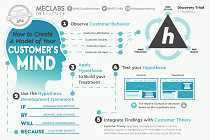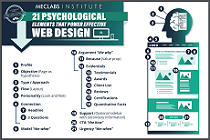March 08, 2002
How To
|
SUMMARY:
While it seems that there are infinite sources of technology ink, there really are not that many left any more. If you need to pitch a technology story, you are going to have to make nice with the handful or so technology reporters and columnists who matter. MarketingSherpa's editor Alexis Gutzman talks about what it takes to get ink for high tech products and services these days.
|
|
By Alexis D. Gutzman
While it seems that there are infinite sources of technology ink,
there really are not that many left any more. If you need to
pitch a technology story, you are going to have to make nice with
the handful or so technology reporters and columnists who matter.
As a former weekly columnist covering ecommerce and ebusiness
technology-related topics for Internet.com and Office.com, I
needed a lot of material. This meant that I looked forward to
getting good pitches and hearing about new solutions.
There were plenty of PR people and even a couple agencies whose
phone calls I would always return because they never wasted my time.
How did I know this? They bothered to develop a relationship with
me. They also avoided the 7 avoidable mistakes that so many of
their peers made…
Mistake #1: Pitch without reading the journalist’s stories
When what I write is publicly available for free from the site
where you picked up my email address, please bother to read the
column that is on the same page. When you pitch me on a
technology that I wrote about last week, and do not even mention
how your client is similar or different to the one(s) I just
talked about, I hit 'delete.'
Mistake #2: Send big attachments with your pitch.
Do not risk sending me something that is going to make me angry at
you before I even open your message.
Everyone (else) knows that attachments are frequently a source of
viruses. Never send an attachment without the writer requesting
it. Better still, give them the link to click through to the PDF
on the server.
Also, there are plenty of freelance writers who are on old
clunkers with dial up connections that might even crash when they
attempt to download big files. As an addendum to this point,
make sure the PDF files you make available are printer friendly.
If they will print an entire blank page of black or any page of
solid color, get a printer-friendly version created.
Mistake #3: Use BCC email when sending a pitch to multiple
journalists.
This may actually work if you are pitching to fashion writers, but
tech writers are highly likely to have sophisticated inbox
filtering set up – as do I – so that likely spam, which includes
anything addressed via BCC, either goes directly into the deleted
folder or into a likely spam folder. 99% of BCC’d mail is spam.
Even if you do not get deleted right away, you look like an
amateur. (Someone please forward this to DoubleClick; they’re
still pitching via BCC.) How else do you send the same message
to 200 people individually? For under $50 you can get simple
software that permits you to do it.
Here's a link to my past review of four of these bulk-emailing software
products: (You'll need to cut and paste this into your browser.)
http://ecommerce.internet.com/news/insights/ectech/article/0,3371,10378_910791,00.html
Mistake #4: Pretend to represent the client of the vendor
instead of the vendor.
You know that writers like to cover the results of your product,
not your product, so you think you will pitch your clients to me.
That is fine, as long as you do not pretend that you work for the
client.
Earlier this week I was pitched a company that used the
technology of another company. I thought I was going to be
hearing about the first company with which I was speaking. Early in
the interview, I realized that this interview was going to be
entirely about the other company's technology, and I almost hung
up the phone. The PR firm that pitched me has a stellar
reputation – or had one, anyway.
Mistake #5: Ignore the importance of relationships.
Whoever told you that PR is a numbers game is now in a new
industry. PR is a relationship business. Period.
The longer writers write, the more they rely on trusted sources.
You can not become one over night, but by writing intelligently to
writers on a semi-regular basis, you can create the impression
that you are not here for the long haul.
Like many journalists, I keep a database of trusted publicists.
When I need a source, I use the software I mentioned above to
send an email to them asking for clients who might fit into my
column or story or book. Want to get on that list? You will need
to start a relationship with me -- not just send me a bunch of
releases.
Mistake #6: Create an entirely new term (ideally an acronym)
for what your client does.
As a busy writer, I do not have time to guess what your cute
little acronym stands for. I know that I know what is out there.
You are not going to convince me that this is something I (and by
extension my readers) need to know about by creating new
terminology.
Please use industry-standard vocabulary and focus on using
features and clients to set yourself apart. We are not impressed
when you are first-to-market in the industry you have defined with
your new vocabulary.
Mistake #7: Put the words “press release” in the subject line.
You do not have that much time to catch my attention. Put the
problem you are solving in the subject line or something else to
convince me to open it. Clever is not necessary, but relevant is.
If you can figure out a way to include something I wrote recently
in the subject line, I will open it, as will every other writer.
Plus, three other tips I would offer include:
a. Spell the writer’s name right
b. Know what days the writer publishes and what days they are
on deadline, so you do not call when they are on deadline
c. Know whether Chris (or Alexis) is a man or a woman, so you
can address the writer appropriately
ALEXIS D. GUTZMAN joined MarketingSherpa as Managing Editor in
January 2002. Her most recent book, 'The E-Commerce Arsenal: 12
Technologies You Need to Prevail in the Digital Arena,' was named
one of the 30 best business books of the 2001. Her new book,
'Unforeseen Circumstances: Strategies and Technologies for
Protecting Your Business and Your People in a Less Secure World,'
will be published in May by AMACOM Press.









